
When two elephants fight, it is the grass that gets trampled. (African proverb)
The private settlement of HP’s lawsuit against Oracle over its hiring of Mark Hurd as co-president after weeks of public wrangling is welcome news to everyone but the corporate attorneys.
Still, don’t expect the two vendors to just pick up and resume their former close partnership. Their quarrel got very ugly, very fast.
This was not the typical cross-competitive carping that vendors routinely spew to denigrate their rivals’ products and strategies. The issues between HP and Oracle are very personal and very deep. The verbal volleys Oracle CEO Larry Ellison lobbed at HP in recent weeks exposed the changing nature of this decades-old alliance. It is morphing from a close, mutually beneficial collaboration to a head-on collision in several key product areas.
Ellison’s words did more than just wound HP: They also opened up deep fissures in the relationship that are as big as the San Andreas Fault. The HP/Oracle relationship will survive for the sake of their common customers, but it will likely never be the same.
Poking Around in Hurd’s Brain
The industry-at-large will probably never learn the “real” reason(s) the HP board of directors peremptorily ousted Mark Hurd as CEO. What is clear is that Oracle CEO Larry Ellison was motivated by more than just concern for his friend when he publicly castigated HP for the firing and extolled the business acumen of his tennis buddy. You just knew Ellison was going to give Hurd a prominent position at Oracle — and he did: co-president.
In a regulatory filing earlier this week, HP disclosed that to end the lawsuit, Hurd will give back 325 thousands shares of restricted stock shares valued at US$13.6 million that he received as part of his severance package. Hurd gets to keep more than $12 million in cash he received. In exchange for that, Hurd will not disclose any of HP’s trade secrets.
This last stipulation is very sticky. Defining what constitutes “intellectual property” (IP) is just as tricky as defining “obscenity.” In more than 30 years, the Federal Communications Commission (FCC) has been unable to achieve consensus on what constitutes “obscenity.”
How exactly will HP monitor Hurd to prevent him from telling Oracle what he knows about HP’s general tactics, strategy and relationships with customers, partners and competitors, as well as its general product directions. How will it prevent him from acting on them by counter-marketing? It’s not like HP can put an ankle monitor around his brain. Short of bugging Hurd’s communications, HP can never have 100 percent certainty that some of its secrets are no longer secret. Hurd will use his knowledge of HP’s workings and wield it like a weapon — on Oracle’s behalf.
Any way you look at it, losing Hurd to Oracle is a big blow to HP even if it did fire him for undisclosed inappropriate behavior.
Ellison’s Grand Strategy
Larry Ellison is many things. But of all the many adjectives, epithets and sobriquets that have been used to describe him and the invectives that have been hurled at him, “stupid” is not one of them. Mr. Ellison has a plan. It most assuredly involves the aggrandizement of Oracle at the expense of competitors as his firm increasingly finds itself in head-to-head competition with HP. Why else would he effectively trash the decades-long, mutually beneficial and collaborative partnership between his firm and HP, and then deliver the coup de grace by hiring Hurd?
The HP board of directors, while more reserved and civil than the outspoken and openly bellicose Ellison, is just as committed to the ongoing fight for high-tech supremacy. Outwardly, HP will maintain its dignified and understated mien, but behind the closed (and hopefully not bugged) doors of its boardroom, the HP suits are plotting each move and countermove with great deliberation. Their decision to file suit against Hurd scant hours after Oracle announced his appointment as co-president shows that HP is shedding the velvet gloves in favor of the iron fist.
Regardless of the settlement, the underlying reason that HP said it filed suit against Hurd for taking the Oracle co-presidency — “In his new position, Hurd will be in a situation in which he cannot perform his duties without necessarily using and disclosing HP’s trade secrets” — still exists.
Hurd and Oracle are highly unlikely to steal any of HP’s IP with respect to specific products and engineering. But there’s a lot of gray area surrounding IP and what types of knowledge are already in the public domain. You’d better believe that both HP and Oracle have set up war rooms in their respective boardrooms.
Make no mistake; there will be casualties of war.
And to quote the African proverb, the blades of grass in this fight are the respective customers and third-party suppliers, as well as the sales and distribution channels that support the enormous HP and Oracle ecosystems.
HP is the world’s largest technology company by revenue, as well as the top PC and server vendor, while Oracle is the world’s third-largest software company, according to IDC.
HP and Oracle by the Numbers
On paper, HP and Oracle appear evenly matched. The notable exception is in revenues. Even after a five-year multibillion dollar buying spree, Oracle’s sales still trail significantly behind HP’s.
- Oracle Financial Statistics
Market Cap: $138.12 billionProfit Margin: 22.88 percentOperating Margin: 36.68 percentTotal Cash: $18.47 billionDebt: $14.66 billionReturn on Assets: 11.28 percentReturn on Equity: 21.96 percentAnnual Revenue: $26.8 billionAnnual Net Income: $6.14 billionQuarterly Revenue Growth: 38.50 percentQuarterly Earnings Growth: 25 percentSource: Capital IQ, 2010
HP Financial Statistics
Market Cap: $90 billionProfit margin: 6.99 percentOperating margin: 10.17 percentTotal Cash: $15.38 billionDebt: $20.05 billionReturn on Assets: 6.80 percentReturn on Equity: 20.54 percentAnnual Revenue: $123.53 billionAnnual Net Income: $8.64 billionQuarterly Revenue Growth: 11.4 percentQuarterly Earnings Growth: 6.1 percentSource: Capital IQ, 2010
From Collaborative to Competitive
Until recently, HP and Oracle did not compete head-on. Though their management styles were worlds apart, their partnership thrived despite such differences.
Oracle is defined by the brash Ellison, while HP executives take a low-key and platform-agnostic approach to most high-tech competitors, excepting IBM. For years, Oracle and HP were bound by their mutual rivalry, albeit in different product arenas — Oracle competed fiercely with IBM’s DB2 database, while HP and IBM competed in just about everything else, including PC and server hardware, as well as the lucrative services market.
After decades of publicly hurling invectives at one another, Oracle and IBM in the last several days have done an about-face and are now engaged in an almost embarrassing display of public affection. This lovefest would truly be gag-worthy if not for the realization that Big Blue and Oracle don’t hate each other any less; at this point in time, they just loathe HP more. It’s truly a case of “the enemy of my enemy is my friend.”
IBM CEO Sam Palmisano decided to seize the opportunity to blast HP, publicly castigating it in a September 15 Wall Street Journal interview. Palmisano gave a detailed litany of HP’s faux pas. They included mishandling Hurd’s ouster by giving him a $40 million-plus severance package, which he said was “not a good use of shareholder money”; allowing Hurd to slash HP’s research and development budget to $2.8 billion — just 2.5 percent of total revenue; and for getting in a bidding war with Dell over the acquisition of virtualization storage vendor 3Par and paying more that what it’s worth. Palmisano’s most acerbic statement was that HP was in such a weakened state that IBM no longer considered it a competitor. Not true, of course, but it stings just the same.
It was Ellison and Hurd’s turn to heap praise on IBM during the Oracle September 16 earnings call. Ellison called IBM “a great services partner,” and said his partnership with IBM is “absolutely critical.” Ellison positively gushed while observing that “IBM’s mainframes add value because they aren’t commodity boxes and serve a real need.”
HP has remained characteristically mum about Palmisano’s and Ellison’s comments, but it is undoubtedly plotting a counter attack.
Collaboration and “co-opetition” between HP and Oracle may exist on paper and publicly, but there is open enmity behind the scenes.
Merger Mania
The reality is that all of the top-tier high technology vendors are on a collision course with one another, spurred on by the need to grow by acquisition rather than organically. In a challenging economy, it’s a dog-eat-dog fight for corporate and consumer monies.
Consider this: In the last six years, Oracle’s Ellison has spent as much on mergers and acquisitions — more than $40 billion, including the January acquisition of Sun Microsystems for $5.9 billion — as the company has earned in profits over a 30-year span. In Ellison’s grand strategy scheme, the moves make sense, because a bigger Oracle can better compete with the likes of IBM and SAP.
HP is keeping pace with Oracle in the M&A sweepstakes — having bought Compaq, EDS, 3Com and most recently swooping down and outbidding Dell for virtualization storage company 3Par for $2.4 billion and security vendor ArcSight for $1.5 billion. Now HP is in a bidding war with IBM to buy Israeli-based Radware, which makes application delivery and application security solutions and load-balancing switches.
Winners and Losers
Corporate customers are the biggest and most immediate potential losers. Partnerships, mergers and acquisitions may look like a game of Monopoly on paper, but there’s a lot at stake. Even the best of circumstances — an amicable and well-planned purchase with little or no product overlap — there’s a certain amount of disruption that follows an acquisition.
In these cases, it takes six months to a year to integrate and assimilate an acquired firm into the fold. Oracle’s acquisition of Sun Microsystems, which includes Sun’s SPARC server hardware, Solaris operating system and the open source MySQL database, has a lot of users concerned about the future of those product lines, despite the company’s public reassurances.
While few distributors or users will go on the record, many of them are understandably nervous about the potential ramifications when their major hardware infrastructure and software vendors fall out.
Imagine you’re the CEO, CIO, CTO or VP of IT who has to make purchasing decisions for the next three-to-four year upgrade cycle. Can you trust that HP and Oracle have truly made up? Or are you worried that when hostilities between the two break out again, your firm might get caught in the crossfire?
Can you trust the promises of your vendor(s) to retain an acquired firm’s product portfolio? And even if it does, will the top engineers and product managers from a company like Sun (to cite just one example) remain with the company post-acquisition? Will the licenses carry over, or will your organization face steep price hikes in volume licensing? Service and support is another big issue in a post-merger entity. Once again, corporate customers are wise to ponder potential changes.
Organizations also get rightfully nervous that their vendors will get distracted by the public wrangling and potential lawsuits. These issues frequently lead to product delays and quality issues. Oracle is the world’s No. 1 database vendor, and the Oracle database also has the dubious distinction of being the platform with the most security flaws.
The National Institute of Standards and Technology (NIST), the government agency tasked with monitoring security vulnerabilities, recorded a whopping 321 security vulnerabilities associated with the Oracle database from January 2009 through June 2010. That’s six times more than the 49 vulnerabilities Microsoft’s SQL Server notched and nearly triple the 121 security vulnerabilities recorded by IBM’s DB2 database during the same eight-and-a-half-year period.
Though there’s no proof of a connection, the security issues associated with Oracle’s database spiked sharply in 2006 — around the same time the company embarked on its merger and acquisition campaign — and they’ve remained elevated over the past four years.
Though reluctant to speak on the record, corporate customers and distributors have some trepidation about the impact of the growing competition between HP and Oracle, even though the immediate crisis appears to be over. If you have concerns, now is the time to voice them and also exercise your right to comparison shop. Speak frankly with your sales representatives and resellers. Use the confusion to your advantage to negotiate for better terms and conditions.
The biggest potential winners in this fight are HP and Oracle competitors. IBM, Dell and other hardware vendors have been openly wooing Sun’s SPARC and Solaris customers ever since Oracle first announced its intention to purchase Sun. Those efforts will continue unabated. IBM and Microsoft executives are also undoubtedly contemplating special sales promotions to lure customers away from the Oracle and MySQL database platforms.
IBM’s Palmisano was right about one thing: HP seriously erred when it slashed its R&D budget to just 2.5 percent of annual revenue. It should rectify that immediately.
There’s another apt African proverb: When the music changes, so does the dance. When it comes to vendors, there’s no such thing as a permanent partner.
E-Commerce Times columnist Laura DiDio is principal at ITIC, a research and consulting firm that covers the high-tech industry.

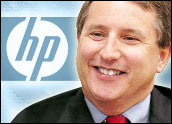

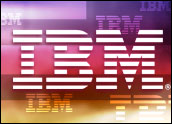
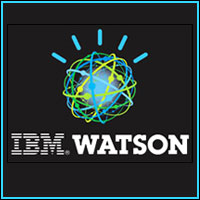
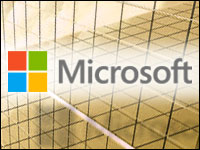
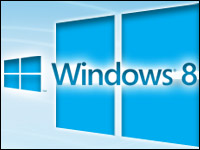
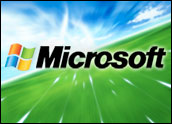
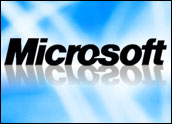

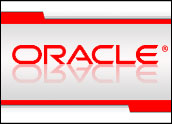
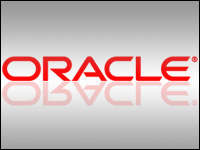




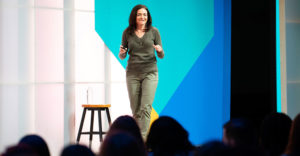

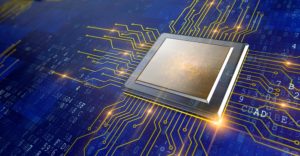




































Social Media
See all Social Media